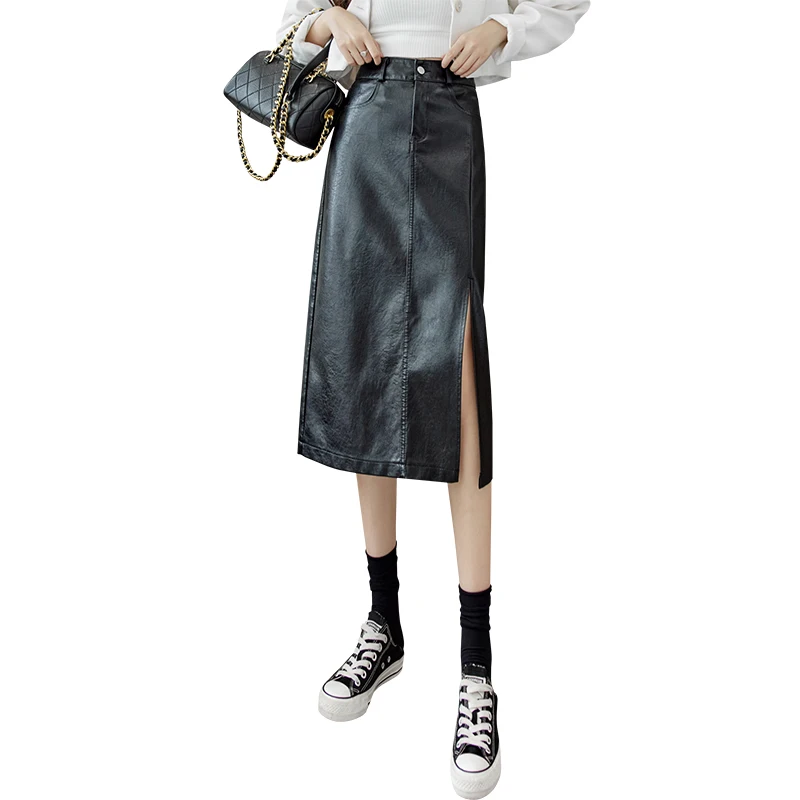
1. Origins of Faux Leather
Faux leather, or vegan leather, originated as an alternative to traditional animal-derived leather. Initially crafted from fabric-coated plastic, its aim was to replicate the look and feel of genuine leather.
2. Early Development
The concept of synthetic leather emerged in the mid-20th century. Initially used for accessories, faux leather gained popularity due to its durability and affordability.
3. Technological Advancements
Advancements in manufacturing processes led to improved textures and appearances, making faux leather a viable option for various clothing items, including skirts.
4. Vegan Fashion Movement
Faux leather skirts gained prominence as part of the vegan fashion movement, advocating for cruelty-free and sustainable alternatives in the fashion industry.
5. Fashion Revolution
The rise of eco-conscious consumers led to increased demand for sustainable fashion. Faux leather skirts became a fashionable choice due to their ethical appeal.
6. Diverse Styles
Designers began incorporating faux leather into skirts, offering diverse styles – from pencil skirts to A-line and pleated designs – catering to varied tastes.
7. Popularity in High Fashion
Faux leather skirts transcended their casual origins and found their way into high fashion runways, embraced by top designers and influencers.
8. Sustainability and Innovation
Advancements in eco-friendly materials and sustainable production techniques improved the quality and appeal of faux leather skirts.
9. Inclusivity and Accessibility
Faux leather skirts became more accessible to a wider audience due to their affordability, making ethical fashion choices achievable for many.
10. Fashion Versatility
Their versatility allows faux leather skirts to be styled for both casual and formal settings, making them a wardrobe staple for many fashion enthusiasts.
11. Cultural Impact
Faux leather skirts represent a cultural shift towards responsible consumerism and an evolving definition of fashion sustainability.
12. Celebrity Endorsement
Celebrity endorsements and social media influence amplified the popularity of faux leather skirts, showcasing them as stylish and ethical choices.
13. Fashion Industry Adoption
Major fashion houses and retailers started incorporating faux leather into their collections, further solidifying its position in the fashion mainstream.
14. Continued Evolution
The ongoing evolution of technology and sustainable practices continues to refine faux leather, ensuring its durability and enhancing its eco-friendly aspects.
15. Future Prospects
Faux leather skirts stand as a testament to the fashion industry’s commitment to innovation, ethics, and style, promising a sustainable and stylish future.
History
Faux leather skirts, a symbol of fashion innovation and ethical consciousness, trace their origins to the mid-20th century when designers and innovators sought alternative materials to traditional leather. The concept emerged as a response to the environmental impact and ethical considerations associated with animal-derived leather. Initially crafted from fabric-coated plastic, early versions aimed to mimic the appearance and texture of genuine leather while offering a cruelty-free alternative.
As technology progressed, manufacturing processes advanced, enhancing the quality and aesthetics of faux leather. This evolution propelled faux leather skirts from being primarily used in accessories to becoming a viable option for various clothing items. The improved textures and appearances contributed to their increasing popularity in the fashion industry.
The rise of the vegan fashion movement and a growing demand for sustainable and cruelty-free options transformed the status of faux leather skirts. They evolved from mere alternatives to genuine leather to stylish, ethical fashion statements. Faux leather skirts symbolized a cultural shift toward conscious consumerism, appealing to eco-conscious individuals seeking fashionable yet responsible choices in their wardrobes.
Designers embraced faux leather skirts, offering a diverse array of styles, including pencil skirts, A-line cuts, pleated designs, and more. Their versatility allowed wearers to integrate them seamlessly into both casual and formal settings, elevating their status as a staple in modern wardrobes.
The cultural impact of faux leather skirts extended beyond their fashionable allure. They represented inclusivity, accessibility, and a broader movement toward ethical and sustainable fashion choices. As celebrities and influencers endorsed and showcased faux leather skirts, their popularity soared, gaining acceptance in high fashion circles and reaching a wider audience. Major fashion houses and retailers incorporated faux leather into their collections, affirming their place in mainstream fashion and emphasizing their continued evolution toward sustainability and style.
The historical evolution of faux leather skirts mirrors a broader societal shift toward sustainability and ethical fashion, cementing their place as a chic, versatile, and responsible fashion choice.
